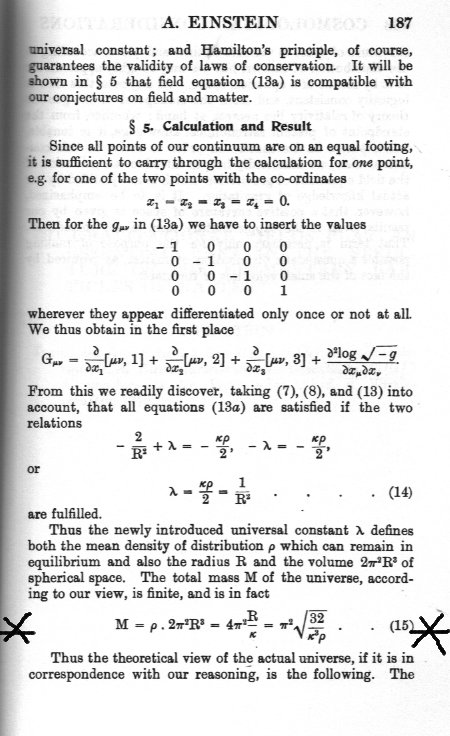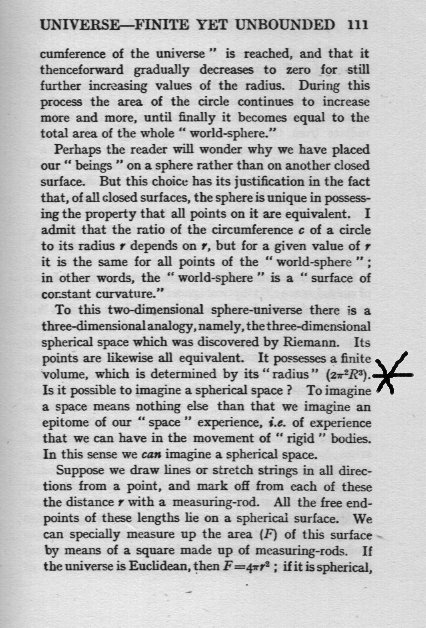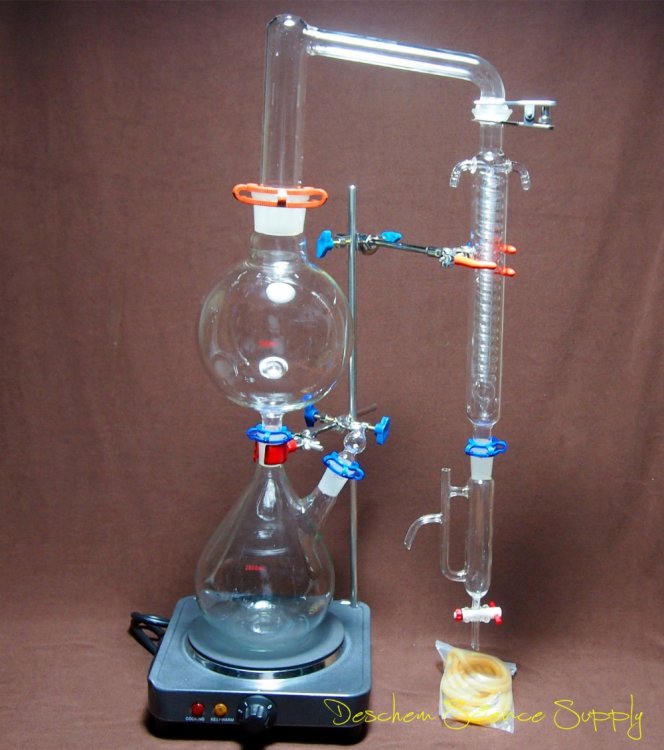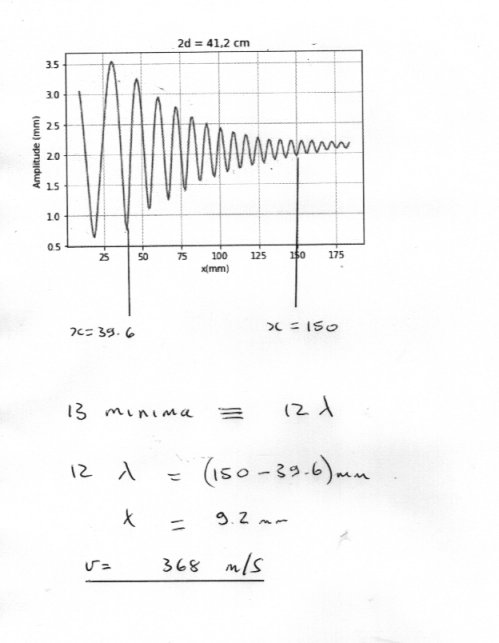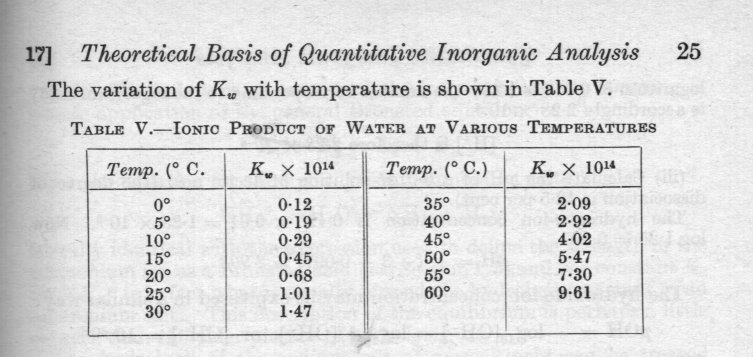-
Posts
18316 -
Joined
-
Last visited
-
Days Won
104
Content Type
Profiles
Forums
Events
Everything posted by studiot
-
Sorry I wasn't completely clear. The thing is that 'Millikan's Experiment' was not one single experiment at all. It was a determined effort by Millikan to measure several important properties of 'the electron' over several experiments during the years from 1909 to 1913. The results and conclusions of this work were first published Phil. Mag., 34, p1, 1917 and later in a series of books which started out with the title The Electron and was revised a couple of times to The electron: its isolation and measurement and the determination of some of its properties. (1919) and later editions Electrons (+ and -), Protons, Photons, Neutrons, Mesotrons and Cosmic Rays (1936) As a result of this work and also work on the photoelectric effect Millikan was awarded the 1923 Nobel prize. The result of this ongoing work over an extended time period, during which other people also added discoveries has resulted in variations in modern accounts in more modern texts. However the importance of this work is that it enabled the drawing together of several branches of Physics and Chemistry towards the more coherent whole we have today. Before Millikan, Faraday had discovered the laws of electrolysis and Avogadro had presented his hypothesis, both in the 1830s. Then, however the molecule was not at all established, Dalton's atoms were still on pretty shaky ground and ions and ionisation were yet to come. Between then and the late 1800s the particulate nature of matter became more and more established, but electricity was seen as quite a different subject. The idea that the particles of matter were held together by electric forces was yet to arrive. Electricity was known to come in two polarities, positive and negative, but details were not known. Then in 1897 Thomson discoverd 'particles' of electricity. He had discovered the electron. Furthermore he measured the ratio of the charge to mass, e/m for this particle. Then in 1909 Perrin came up with a good value for the Avogadro constant or number. That is the number of particles in a mole. It was seen that this tied in with Faraday's work since 96500 coulombs were required to deposit 1 mole of a monovalent element. Since the proposition was that 1 mole contained a large (Avogadro's) number if identical particles it followed that an identical charge must be supplied to deposit each one and that these might be tied in with Thomson's electrons. Thomson and independently Wilson were experimenting with the production of ions in gases and measuring their charge, both positive and negative. (This part is not normally taught in chool Physics these days) but it was their methods that Millikan drew upon and extended so that: It was at this point that Millikan entered with his series of experiments that were able to determine not only the values of both the mass and charge on the electron but that the charge was equal to the 96500 coulombs divided by Avogadro's number and that it was negative. So electrons were particles that were carriers of a fixed amount of negative charge that also possessed a small amount of mass compared to any atom of any element. The way was now open for Physicists to develop atomic models and Chemists to develop electron exchange models of ions and valency (chemical bonding). Both of which developed rapidly in the early 1900s. In his actual experiments Millikan changed Wilson's 'condenstaion of water' method to a fine spray of oil. This fine spray did not evaporate like water and could be controlled and came ready with a small charge due to friction in the atomiser nozzle. Since this was a small charge and many droplets were not charged at all, in later experiments he followed Wilson in irradiating the air in the chamber with X rays. This first ionised some of the air and then the air particles transferred this to the droplets by collision. A swansont notes, he was able to control the potential on his plates so the he could measure for both positive and negatively charged droplets as he did not initially know which would occur. Today we sometimes use alpha rays (positive) insted of X rays. These steal electrons from the gas, creating positive gas ions, which in turn regain electrons from the oil droplets, creating positive oil droplets. A rays, being neutral will separate electrons from the gas particles, creating posotv gas ions and free electrons, some of which attach to the oil droplets forming negative ions. So Millikan's original equation was If a droplet aquires a charge q, then the resultant force on the droplet will be mg ± Eq depending upon the sign of the charge q. (E is the strength of the electric field between the plates) I assume you have an idea of the method but I can provide more detail if you like.
-
Instead of being rude and condescending about our abilities why not just post the requested information and see if we understand it ? I note you have ignored my comment about diameters v radii. Using diameters instead of radii is equivalent to asking "what is the diameter of curvature in differential geomery ?"
-
It's a very good and perceptive question. +1 It should be noted that the original experiment as conducted by Millikan was very different from the simplified one studied in schools and actually carried out in some of them. In particular neither Millikan nor anybody else originally knew what the charge was. The droplets from the atomiser were ionized by means of X rays. Since then it has been discovered that friction within the atomiser is sufficient to ionise the droplets and that they then carry a negative charge. Also it was not originally known that there was a unit charge, e. This actually came out in the original experiment. Millikan found that charges by balancing gravitational, frictional (viscous) and electrostatic forces on specific drops. He discovered that the charge was negative and could only be changed in integer multiples of a base unit of charge, e and the change could not be made smaller than this.
-
This leads to put y = 2 then x2 -2x +1 =0 (x-1) (x-1) = 0 x =1.
-
He does indeed as in the attached, but I'm pushed to find a tau in either document. If Pi was good enough for good old Albert, why is it not good enough for you ? In respect of diameter v radius, There are good practical reasons for retaining both measurements. In respect of your other commitments, you have reached your 5 posts in your first-24-hours anti-spam limit. So I suggest you use that time to consider your reply and also think very carefully about the SF rules.
-
For the nitrophenols phenols look here. https://www.vedantu.com/question-answer/the-correct-order-of-decreasing-acidity-of-class-12-chemistry-cbse-5f4cb04546779f7310735ca5
-
Yes you are right, my mistake, 2πR = τR =2πR = τD/2 = πD Why is this the most important thing to start your thesis with ?
-
Yes I'm back and my simple question remains unanswered. Why is 2πR different from τD ?
-
Fair enough. Now let us see this equation and please explain why there is any essential difference since the substitution of the diameter for twice the radius in calculations makes no essential difference.
-
First are you sure you have the correct order of acidities ? These are similar questions to the ones you asked last July but you are correct there is an additional effect with the possibility of H bonding. Please check your acidities then study this reference and then come back with any further questions. https://chem.libretexts.org/Bookshelves/Organic_Chemistry/Map%3A_Organic_Chemistry_(McMurry)/20%3A_Carboxylic_Acids_and_Nitriles/20.04%3A_Substituent_Effects_on_Acidity
-

mystery glassware identification - anyone knows what this is ?
studiot replied to zemlya's topic in Applied Chemistry
Looks suspiciously like you nailed it. +1 -

What's the story with physics?
studiot replied to AlexPontik's topic in Modern and Theoretical Physics
Don't think this guy is a kiddie. Someone with that handle has been to many debating, christian and maths sites over at least the past year and a half peddling the same stuff. here is a comment forma member on a maths site -

mystery glassware identification - anyone knows what this is ?
studiot replied to zemlya's topic in Applied Chemistry
Looks like part of some form of double flask reflux condenser. Here is one for essential oils preparation. -

What's the story with physics?
studiot replied to AlexPontik's topic in Modern and Theoretical Physics
Are you serious or is this just an attempt to stir the pot ? Try googling accidental discoveries ie those with no prior theory eg https://interestingengineering.com/15-accidental-science-discoveries-that-changed-the-world There are many many important examples where observation preceeded theory. eg X rays, radio-activity, cosmic background, penicillin, ......... -
Include a “d” term for both and it may make more sense. It will cancel, of course. The change in the path difference is entirely from the upper path. Yes perhaps I was making things too complicated. @henk jan I really think your results are OK. Have you counted peaks correctly ? I make your estimate of the sound velocity 368 m/s If you look carefully, there is a big variation in apparent wavelength close to the mirror and a weak waveform at far distance as the pattern dies away. So I have chosen the 13 minima from the middle section to provide an average over 12 wavelengths. Also how accurate do you think the frequency of your sound is ? Does this now help ?
-
Since this is all you seem to want to know, the dependence of pressure is negligable for range of pressures encountered outside specialist facilities. Here is a table of dependence on temperature. As can been seen this varies by a factor of about 100 over the range 0oC to 60oC Both temperature and pressure dependence are experimental facts, which is why everyone is talking about tables of data. I would suggest looking in the Chemistry or Science reference section of your local library. Since you are in Australia, they will probably have the latest copy of Kaye and Laby, Tables of Physical and Chemical Constants from the UK National Physical Laboratory or Lange's handbook of Chemistry or The CRC (rubber) book Rather smaller books of tables prepared for national schools and colleges, such as the Nuffield one or SI Chemical Data by Aylward and Findlay (Wiley) Or yes you could ask Google. But you need to go right back to my proforma standard equation A + B = C + D to know what to look for. You would also need this equation to use the information correctly, as exchemist has already indicated. There are four different possibilities Strong acid + strong base Strong acid plus weak base Weak acid plus strong base Weak acid plus weak base. Each of these leads to a different equation, which must be handled appropriately (differently). The last one is often used in a simplified form called the Henderson - Hasselbalch equation, (which itself has two versions) especially by the life sciences (biochemistry etc) where is was originally stated. So you see there is not one equation but getting on for 10 different ones depending upon circumstances and complexities and where my express version was heading. I am sorry you didn't like it as it involved me in substantial work on your behalf.
-
Is there a phase change for sound ?? Yes for light
-
I suppose this partly depends upon what you mean by. 1) A standard academic establishment 2) A standard research establishment 3) Political. Society is far more complex than you perhaps suppose so what are you counting in and what are you counting out ? Since you are new here perhaps it is fair to warn you that you have a total of 5 posts allowed in your first 24 hours. So use them wisely. After this day you can post to your heart's content.
-
How is this correct ? What two waves are interfering to produce the nodes and antinodes ? The sound mirror is at position a or position b, but not both at the same time so how can these interfere ? Surely the difference in path length is between the direct wave ie d (if you must but I still say 2d is easier) and the indirect wave which is reflected off the sound mirror. Now exchemist has asked a very good question. What is the length of the indirect wave ? Well is it just the distance from Bron to the reflector plus the distance from the reflector to Ontvanger ? Or does any phase change at the solid boundary (metal sheet) make a difference ? The article I posted for you describes this as does the sound wave section in Wikipedia, which you should be able to get in Dutch. https://en.wikipedia.org/wiki/Reflection_phase_change If so what difference ? Bear in mind that a phase change can be related to a distance change via the wavelength. Because you are measuring distances you should be working in terms of wavelengths. Remember that a phase change of π (distance = λ/2) represents destructive interference ie a minimum and a phase change of 2π represents constructive interference (distance = λ)
-
Perhaps that's why my carrots from the supermarket go black so quickly, I often wonder what they wash them in.
-
Excellent, thank you. +1 I suggest that you use 2d for the distance between Bron and Ontvanger as this makes the maths simpler. What formula are you using for path length difference that is what is the relation between x and d and path length ? and what does the plot of intensity against x from your machine show (can you show a picture ?)
-
A proper (but short) description of your experiment and calculation would go a long way to explaining the issue. Until that happens we are just guessing blind.
-
Thank you for coming back to discuss. No the parallel was definitely not that I though your posts confusing. Actually I did not find what you said confusing, just that it did not seem to lead me anywhere. To explain my sugestion about the book. I reckon he was thinking 'ouside the box' and you are perhaps doing something similar but having trouble crystallising your ideas and setting them down in a presentable order. They may or may not be good ideas but until you can express them understandably to others they will remain undisclosed. You should not think of Mark Levi actually proving Mathemtics in a way acceptable for a formal maths text or treatise. But that he can demomonstrate processes in the natural world that follow them helps some people and shows there is a connection beyond mere symbolism. And he has some very interesting (to me anyway) ideas on this. I think he overdoes Pythagoras, but demonstrating the Gauss-Bonnet Theorem by Physics is quite something. Out of interest I find Stanislaw Lem very confusing. My wife and I once cooperated in a translation from Hungarian to English of some of his works. Personally I am not very interested in number theory but I was intrigued to find out more about this emboldened claim of yours I am also wondering if you are grappling with ideas of algebraic geometry ( & topology). These were introduced when it was discovered that the basic ideas (elements) of point, line, plane and hyperplane do not fully cover or describe (since 'cover' is a special word in maths) even the extension to 2 dimensions let alone 3 or more. Some additional basic elements were required. And one type is based on a triangle.
-
Something seems to be lost in translation here. How is a pH of 8.6 acidic ? More to the point is this all not off the original purpose of making acids for agricultural purposes of modifying soil not making a bactericidal wipe or spray? I say this because I looked round at 'anolyte' and found some western companies offering hard to believe claims without any evidence, as well as some eastern european (including russian) sources. So it would seem to me that that particular subject deserves a thread all of its own as any acid of this type has no known agricultural use.


